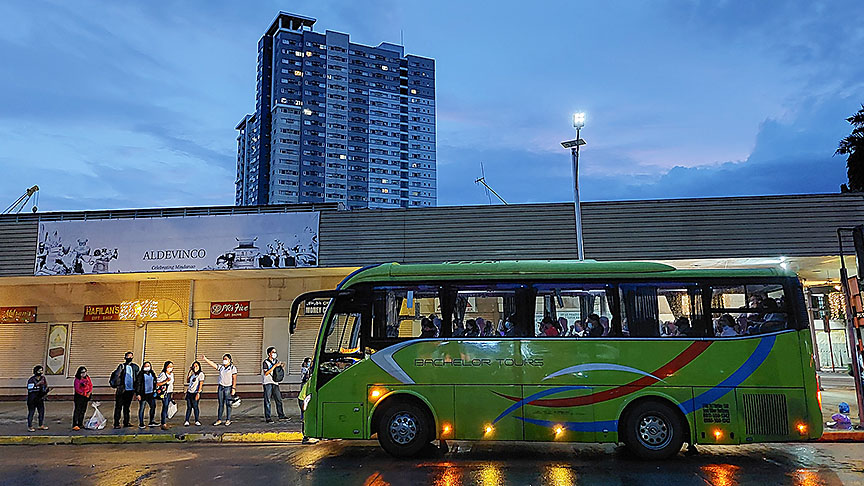
DAVAO CITY (MindaNews / 11 October) — Availability of funds to address right-of-way issues has prevented the Davao City Public Transport Modernization Project (DCPTMP) from starting civil works, more than eight months since President Ferdinand Marcos Jr. led the ceremonial project signing last February 8.
“The DPMTP, which will transform public transport in Metro Davao, is facing right-of-way challenges,” Department of Transportation Secretary Jaime Bautista said in a speech during the 1st Mindanao Infrastructure Summit at the SMX Convention Center here Thursday morning.
When asked by reporters to elaborate on the so-called challenges, Bautista said they still need to address land acquisition problems and reconcile with 32 land owners on putting up facilities necessary for DPTMP, such as depots, bus terminals, and a driving school.
“Hindi naman delayed yung funding (The funding is not delayed), the issue is the availability of funds, that’s why we ask Congress to give us more funds for the right of way,” Bautista said at the sidelines of the event’s press conference Thursday afternoon.
The secretary said the bus project’s funding should not be problematic, noting that the Asian Development Bank is supporting it.
The government signed a $1-billion loan (P54.89 billion) agreement with the ADB on July 1, 2023, to finance the project.
“As far as the budget is concerned, it’s not that problematic, although we requested Congress to allocate more funds, but not that much, just to support the ongoing works to support personnel service of DOTr, but as far as the project is concerned, it is a go, and we are on track,” Bautista said.
Meanwhile, DOTr Supervising Administrative Officer Nestor Kilian Tabada said that once necessary funding is allocated, they will process land acquisitions and begin construction.
“Karamihan po (Most are) private [land owners], most of them are corporate and some individuals… Pag nakuha na natin ang funding (once we get the funds), we will process the land acquisitions,” Tabada said.
Expected to be operational by 2026, the P73.4-billion transportation project will cover 29 interconnected routes spanning a total of 672 kilometers.
The Department of Transportation awarded notice to proceed contracts for the first three packages of the bus project to China International Water and Electric Corp., and the fourth package to a joint venture between China Wu Yi Co. Ltd.-Fujian Construction and Engineering Group Co. Ltd. and Vicente T. Lao Construction.
“These packages are for civil works,” Bautista said.
Meanwhile, during his state of the city address last July, Davao City Mayor Sebastian Duterte expressed dismay that the HPBS has been “defunded” by the national government apparently due to political differences between Marcos and the Dutertes.
He added he already sent letters to the DOTr and the Department of Environment and Natural Resources to inquire about the project’s status.
“I doubt nga butangan pud na nila og kwarta gyud. So ayaw na lang gyud mo og (I doubt the current government will fund the project, so don’t)… I don’t want to be pessimistic, but I have to be realistic, kay mao gyud ang sitwasyon (because that is really the situation),” Duterte said on the DCPTMP’s fate.
Once operational, the bus project will commence with 29 bus routes divided into four tiers: MetroDavao which will form the core services that connect all major commercial centers along five routes), DavaoInter which will run along with eight routes connecting the inner urban areas directly to the Davao Central Business District, DavaoFeeder which will run along nine routes linking smaller centers and areas of more dispersed populations to the MetroDavao services, and DavaoLocal which will provide a link between the outer rural areas of the city and the main transport system or the integrated terminals.
Under the bus system, around 1,000 bus stops will be put up at a distance of 500 meters apart along the 29 bus routes around the city. (Ian Carl Espinosa/MindaNews)
0 Comments